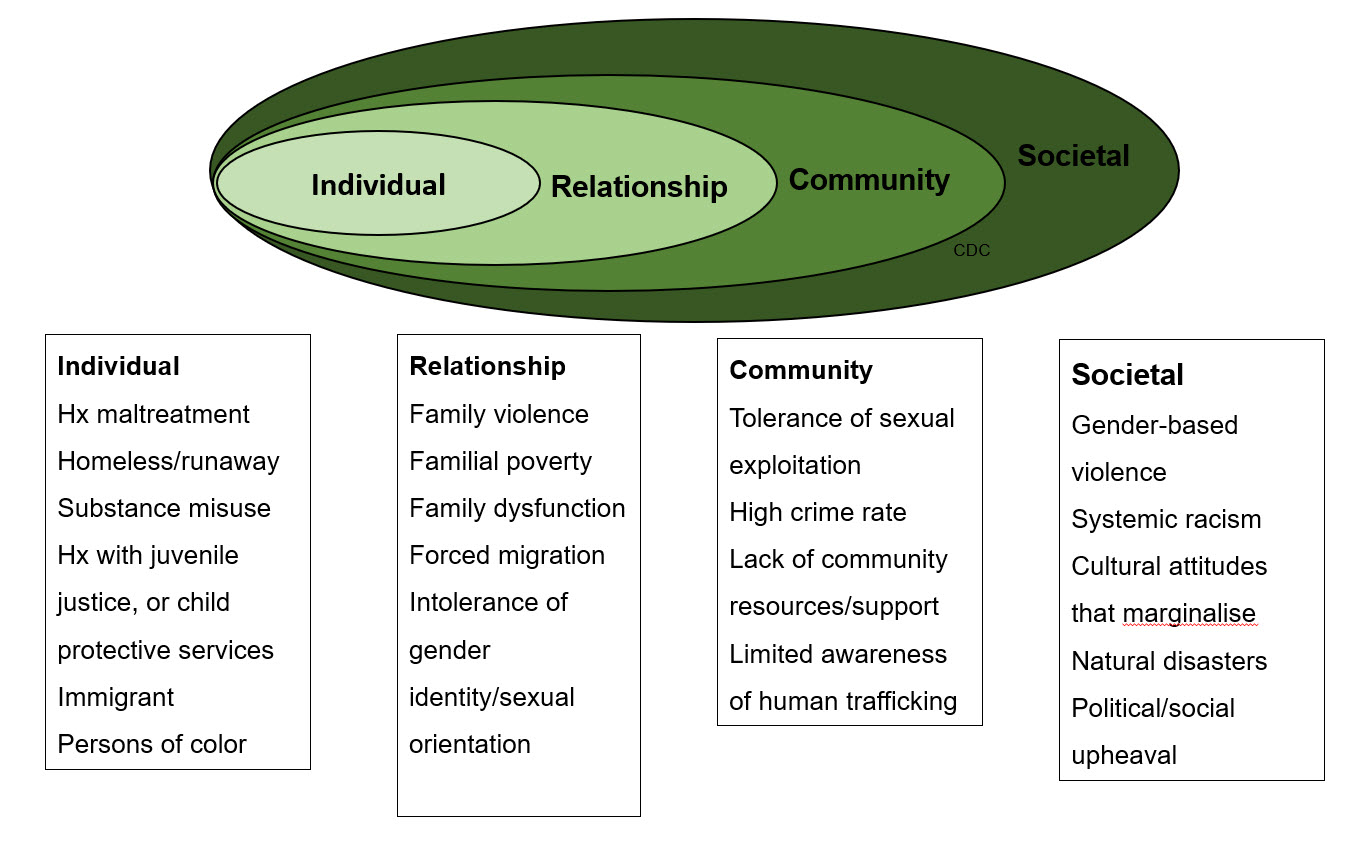Trafficking and exploitation of children and youth are complex problems requiring an organized, holistic public health approach. Pediatricians and other health care providers have a critical role to play in recognizing and assisting those in need. Below you will find information on child and youth labor and sex trafficking, trauma informed care, educational resources, proper ways to engage community agencies and survivors, and the importance of safe documentation. If you are interested in providing longitudinal care for trafficked individuals, there are guides, templates and resources on primary care services within a holistic context. You will find resources for patients and families and information on child trafficking prevention.
- While state laws vary slightly in their definitions, federal law defines child sex trafficking as involving a minor (<18 years old) in any commercial sex act (sexual activity for which something of value is exchanged).
- Child labor trafficking involves subjecting a minor to involuntary servitude using force, fraud or coercion.
- Reliable prevalence estimates of human trafficking are elusive; to date there are no good estimates for the US. However, the International Labor Organization estimated that 24.9 million people were victims of forced labor in 2016 (including forced labor in the private economy, state-imposed forced labor and forced sexual exploitation of adults/child commercial sexual exploitation).
- Of this group, 18% were children (4.5 million).
- There is no ‘profile’ of a trafficked person. Sex and labor trafficking cross all racial/ethnic, socioeconomic, religious, national and cultural boundaries. While some children and youth experiencing exploitation have no obvious risk factors, others may be made vulnerable through one or more of the following conditions.

- What might child trafficking look like in your neighborhood?
- 15-year-old female meets a ‘young man’ on social media, develops a relationship with him, and eventually agrees to run away with him to ‘the city’, where he convinces her to sell sex to help raise money for their new life together.
- A young mother who loses her job during the Covid pandemic allows her 9-year-old son to be molested by her landlord to avoid eviction.
- 16-year-old female is employed in the home of a wealthy family to be a ‘nanny’ but is forced to work 14-hour days without pay, cleaning the house and providing child care. She is sexually assaulted by the father of the house, and not allowed to leave the home.
- 14-year-old transgender female runs away from home to escape the mother’s rejection of her gender identity. She exchanges sex while living on the streets, in order to pay for food, and obtain shelter.
- 17-year-old male comes to the US from Honduras, and is forced by his employer to work 12-hour shifts 7 days/week at an upscale restaurant, cleaning and washing dishes. He cannot leave because the employer has confiscated his passport and visa.
How do pediatrics and child trafficking intersect?
Trafficked children and youth may experience a variety of physical and mental health complications as a result of their victimization.
For example:
- Traumatic injury (work-related accidental, or inflicted)
- Infection (e.g. STIs, HIV/AIDS, TB)
- Unwanted pregnancy and associated complications
- Malnutrition, dehydration, exposure
- Substance misuse
- Post-traumatic stress disorder (PTSD)
- Depression
- Anxiety disorders
- Behavioral problems (e.g., aggression, hostility, anti-social behavior)
Trafficked children and youth can be inadvertently re-traumatized during healthcare encounters.
For example,
- A thyroid exam may trigger memories of strangulation, leading to anxiety and distress.
- Venipuncture may prompt memories of the pain and helplessness associated with prior forced drug use.
- A genital exam may elicit fear associated with past sexual assault.
A pediatrician’s use of a trauma-informed approach may minimize re-traumatization and facilitate patient feelings of trust and self-agency. Trauma informed care is important to reduce barriers to health care services and access for patients who have experienced trafficking.
Additional Information
Last Updated
11/29/2021
Source
American Academy of Pediatrics